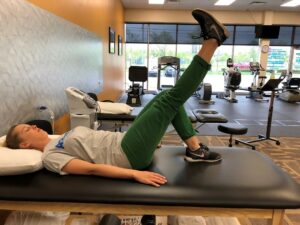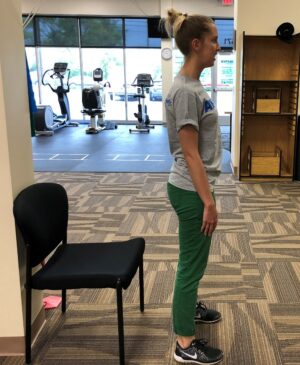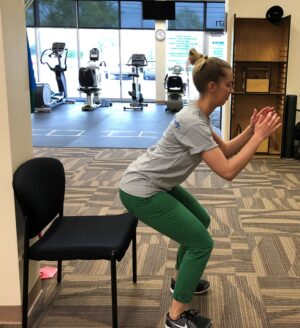
Minimizing the Risk of Running Injuries with Strength Training
1 CommentThe days are longer and the weather is finally nicer, which means more people will be out running. Thinking about running a virtual 5k or half marathon this summer? When deciding between which training program to follow, make sure you don’t forget to incorporate strength training. Strength training is believed to help with injury prevention in runners.
In fact, research shows that a strength training program including resistance and plyometric exercises performed 2–3 times per week for 8–12 weeks is an appropriate strategy to improve speed and form for middle and long distance runners.1 What’s more, runners who performed resistance training three or more times per week were approximately 50 percent less likely to experience a running-related injury.1 The study also showed that the combination of running and resistance training increased both short- and long-term endurance performance in sedentary and trained individuals.
Based on the facts stated above, it is important to strength train while training for your next run – whether it’s a 5k or 26.2 miles. This does not by any means mean that you have to bulk up. You just need to make sure you are working the muscles that support you during your run to make you more efficient and less prone to injury.
Here are some exercises to help strengthen your lower extremities:
Leg raises: Begin lying on your back with one knee bent and your other leg straight. Engaging your thigh muscles, slowly lift your straight leg until it is parallel with your other thigh, then lower it back to the starting position and repeat. Try to keep your back flat during the exercise and keep your leg straight. Complete three sets of 15 and add ankle weights to make it more challenging.


Sidestepping with resistance: Begin in a standing upright position with a resistance band looped around your ankles. Step sideways, maintaining the tension in the band. Walk about 10 feet and then repeat in the opposite direction. Make sure to keep your feet pointing forward and to keep your trunk upright.
Squats: Begin with standing tall with your feet shoulder width apart. Bend your knees, sitting your hips back with your chest upright. Return to standing and repeat. Add dumbbells to make it more challenging.
Bridge with ball squeeze: Begin lying on your back with your legs bent, feet resting on the floor, and a ball between your knees. Engage your abdominals as you gently squeeze the ball between your knees and lift your hips off the ground into a bridge position. Hold for about 2-3 seconds and then lower back down to the ground and repeat.
Crossing the Finish Line
These are great exercises to get you started with strength training and to help you avoid running injuries when preparing for your next race. Don’t forget to also cross train and take days off from running. If you do experience any aches or pains during your training, please consult a physical therapist at your nearby Athletico for a free assessment.
Athletico offers Free Assessments in-clinic or virtually through our telehealth platform. Request your free assessment using the button below.
The Athletico blog is an educational resource written by Athletico employees. Athletico bloggers are licensed professionals who abide by the code of ethics outlined by their respective professional associations. The content published in blog posts represents the opinion of the individual author based on their expertise and experience. The content provided in this blog is for informational purposes only, does not constitute medical advice and should not be relied on for making personal health decisions.
References:
Balsalobre-Fernandez, C., Santos-Concejero J, Grivas GV. Effects of Strength Training on Running Economy in Highly Trained Runners; A Systematic Review With Meta-Analysis of Controlled Trials. The Journal of Strength & Conditioning Research. Volume 30- Issue 8: August 2016
Tan, Phlip. The Role of Resistance Training in Distance Running. Proceeing of Singapore Healthcare 19; 3; 183-187 2010.
Tyson L. Grier, Michelle Canham-Chervak, Morgan K. Anderson, Timothy T. Bushman, And Bruce H. Jone. Effects of Physicals Trainning and Fitness on Running Injuries in Physically Active Young Men. Journal of Strength and Conditioning Research 31: 1: 207-216 2017.








1 Comment
Holly Martin
Being a running coach, I make sure to incorporate strength training with my running practice. I agree with your point that this can improve our speed and prevent injuries while running. Many thanks for sharing these amazing tips and exercises.